Your website ranks on page one for your target keywords. Your content gets shared on social media. Your brand is well-known in your industry. But when potential customers ask ChatGPT, Perplexity, or Claude AI about your product category, your brand never gets mentioned.
Welcome to the new reality of search.
While marketers focus on traditional SEO metrics, a fundamental shift is happening. Gartner analysts predict a 25% decline in traditional search engine volume by 2026 due to AI chatbots and virtual agents. When Google's AI Overviews appear in search results, click-through rates plummet from 28% to 11% on desktop and from 38% to 21% on mobile.
If users get answers directly from AI without clicking through to websites, traditional SEO strategies become less effective at driving traffic and leads.
Some brands are already winning in this new landscape. They're getting cited by AI tools, earning mentions in generated responses, and capturing visibility that competitors don't know exists yet.
This new discipline, called Generative Engine Optimization (GEO) or AI Engine Optimization (AEO), requires a fundamental rethinking of content strategy, technical optimization, and brand authority building.
What's Actually Happening in AI Search

The way people interact with search is changing rapidly. On AI platforms, average query length has jumped to 10-11 words, significantly longer than traditional 3-4 word search queries. Users ask complete questions instead of typing fragmented keywords.
These platforms source and present information differently:
- ChatGPT pulls from training data and uses Bing's search index for real-time information when browsing is enabled
- Google's Gemini and AI Overviews draw from Google's search index, Knowledge Graph, and Shopping Graph
- Perplexity accesses real-time web information and directly cites sources, often referencing Reddit and YouTube content
- Claude excels with user-uploaded documents and can ground responses in specific source materials, making it powerful for data-rich analysis and enterprise use
- Deepseek offers open-source models with explicit reasoning capabilities and optional web search
Each platform has different sourcing mechanisms, requiring a more nuanced approach than traditional SEO.
The Brands Already Winning (And What They're Doing Right)
While most companies are still figuring out AI search implications, early adopters report impressive results.
M8L.com implemented a focused 90-day AI optimization strategy including structured content creation, enhanced expertise signals, and original research publication. Result: 187% increase in ChatGPT citations and 43% boost in referral traffic.
A B2B SaaS company organized content around "Predictive Maintenance" with 10 interconnected posts covering the topic comprehensively. Within three months, ChatGPT-4 began citing their articles as authoritative resources, contributing to a 28% overall web traffic increase.
What made these companies successful? Three key factors:
- Original Research and Data: Content featuring proprietary research, unique statistics, or exclusive expert insights shows 30-40% higher visibility in AI responses compared to generic content.
- Structured, Extractable Content: AI models favor content organized in clear, digestible chunks:
- FAQ sections
- Numbered lists
- Comparison tables
- Direct answers to common questions
- Multi-Channel Entity Authority: Companies that established consistent brand signals across multiple trusted sources found their content more likely to be cited by AI systems seeking authoritative information.
Platform Breakdown: Where Your Content Needs to Show Up

Each AI platform has specific optimization requirements. Success means understanding where each platform sources information and tailoring your approach accordingly.
|
Platform |
Primary Sources |
Key Optimization Focus |
Content Priority |
|
ChatGPT |
Training data + Bing search index |
Bing SEO, clear content structure |
Direct answers, Q&A format |
|
Gemini/AI Overviews |
Google search + Knowledge Graph |
Traditional Google SEO, E-E-A-T signals |
Rich, authoritative content |
|
Perplexity |
Real-time web + diverse sources |
Fresh content, citation-worthy sources |
Structured formatting, credible linking |
|
Claude |
API documents, user uploads |
Data-rich content for visualization |
Enterprise value propositions |
|
Deepseek |
Training data + optional web search |
Technical content, reasoning transparency |
Well-structured, data-driven content |
At the same time, you can't use a one-size-fits-all approach:
- ChatGPT visibility requires strong Bing optimization.
- Gemini's success demands focus on Google's ecosystem.
- Perplexity rewards fresh, well-sourced content.
Content That Gets Cited: The New Rules
AI systems don't randomly select content for responses. They look for specific characteristics signaling authority, clarity, and usefulness.
1. Content Structure Requirements
Lead with answers, then elaborate:
- Use clear, descriptive headings that mirror how people ask questions
- Break information into scannable, modular sections
- Include comprehensive FAQ sections addressing specific user queries
- Implement comparison tables and bullet-pointed lists for complex information
2. Authority Signals That Matter
Credibility indicators AI systems recognize:
- Detailed author bios with relevant credentials and expertise
- Citations to reputable, peer-reviewed sources
- Clear publication and update dates
- Consistent brand information across all platforms
- Expert quotes and original insights unavailable elsewhere
3. Technical Accessibility Requirements
Make content AI-parseable:
- Ensure AI crawlers like GPTBot and Google-Extended aren't blocked in robots.txt
- Implement relevant schema markup (FAQ, HowTo, Article, Product schemas)
- Maintain fast page speeds and clean, semantic HTML
- Keep content fresh with regular updates and accurate timestamps
Technical Foundation: Making Your Site AI-Accessible

Getting found by AI requires ensuring content is technically accessible to AI crawlers and retrieval systems. Many websites inadvertently block the very bots they want to attract.
- Audit your robots.txt file: Verify GPTBot (OpenAI), Google-Extended, and other AI crawlers have access to important content
- Implement structured data strategically: While experts debate whether AI systems directly ingest schema markup in real-time, consensus shows it's crucial for two reasons:
- Helps underlying search engines (Google, Bing) better understand and rank content, making it higher-quality input for retrieval
- Establishes brand and content as clear, structured "entities," a key signal for AI-driven authority
- Optimize for core web vitals: Fast-loading, mobile-friendly sites with clean HTML are easier for AI systems to process
- Create comprehensive XML sitemaps: Help search engines and AI crawlers discover all relevant content
- Monitor crawl errors: Use Google Search Console and other tools to identify and fix crawling issues
Beyond Your Website: Building AI Authority
Your website is one piece of the AI visibility puzzle. These systems draw information from across the web, making a broader digital presence critically important.
The Multi-Channel Entity Strategy
Build a consistent and authoritative entity for your brand across the entire web. Ensure your brand name, products, executives, and core topics are discussed consistently on your website, in PR coverage, on forums, in YouTube videos, and on review sites. AI systems connect these dots to validate expertise and determine trustworthy sources worth citing.
Strategic Community Engagement
Platforms like Reddit were core components of training data for many foundational models and remain preferred sources for answer engines like Perplexity. These platforms provide real-world, conversational context that AI systems value.
Best practices:
- Share technical insights authentically
- Contribute to discussions with data-backed perspectives
- Build credibility within relevant communities
- Avoid overt promotion or spam
YouTube Optimization for AI
Video content increasingly gets referenced by AI systems. Perplexity and Google's AI Overviews regularly cite YouTube content, especially videos with accurate, human-reviewed transcripts that make content "readable" and "citable" for AI systems.
Key optimization tactics:
- Create detailed, accurate transcripts
- Use descriptive titles with target keywords
- Write comprehensive descriptions
- Include relevant timestamps and chapters
Digital PR with AI Focus
Earn mentions on authoritative sites that AI systems recognize as trustworthy sources. A single citation in a respected industry publication or academic paper can be more valuable than dozens of mentions on low-authority sites.
Wikipedia consideration: A well-maintained, neutral Wikipedia page can significantly influence AI responses since Wikipedia is a common source in training datasets and retrieval systems.
Measuring Success in the AI Era

Traditional SEO metrics tell only part of the story in an AI-driven search landscape. You need new ways to measure visibility and impact.
|
Traditional SEO Metrics |
AI Visibility Metrics |
Tracking Method |
|
Organic traffic |
Citation frequency in AI responses |
Manual testing + specialized tools |
|
Keyword rankings |
AI answer inclusion rate |
HubSpot AI Search Grader, Writesonic GEO Tool |
|
Click-through rates |
Referral traffic from AI platforms |
Google Analytics 4 custom segments |
|
Time on page |
Context and sentiment of AI mentions |
Manual analysis + Peec AI |
|
Conversion rate |
Engagement from AI-referred users |
Enhanced "How did you find us?" forms |
The Measurement Challenge
Direct attribution from AI mentions to business outcomes remains difficult due to indirect influence and current tracking limitations. Many AI interactions don't result in immediate clicks but influence later branded searches or direct website visits.
As SEO expert Crystal Carter of Wix notes, marketers should adapt "how did you find us" forms to directly attribute leads from AI assistants. Successful measurement requires combining quantitative data with qualitative analysis.
Practical steps:
- Monitor referral traffic patterns
- Track branded search volume changes
- Regularly audit AI responses for brand mentions
- Update lead capture forms to include AI tools as traffic sources
Getting Started: Your 90-Day Action Plan
Companies winning in AI search aren't waiting for perfect tools or complete clarity. They're experimenting, measuring, and iterating based on results.
Month 1: Foundation
- Conduct a content audit focused on AI-friendliness and extractability
- Review and update robots.txt to allow AI crawler access
- Implement or expand FAQ sections on key pages
- Audit brand consistency across all digital touchpoints
Month 2: Content Development
- Create original research or compile unique industry data
- Develop comprehensive topic clusters around core expertise areas
- Optimize existing content for direct answer formats
- Begin authentic community engagement on relevant platforms
Month 3: Measurement and Optimization
- Set up AI referral tracking in Google Analytics
- Conduct regular manual testing of brand mentions across AI platforms
- Analyze which content formats and topics generate AI citations
- Refine your approach based on initial performance data
Start with systematic testing rather than trying to optimize for every platform simultaneously. Pick 1–2 AI platforms most relevant to your audience, focus initial efforts there, and expand as you learn what works.
The Early Adopter Advantage

We're in the early stages of AI search optimization. Brands that start building AI visibility now will have significant advantages over competitors who wait for landscape maturation.
At Roketto, we've been tracking these trends and adapting strategies accordingly. Our HyperContent approach creates comprehensive, interconnected content clusters around specific topics, naturally aligning with how AI systems evaluate topical authority. Our emphasis on original research and data-driven insights gives clients the unique content that AI platforms increasingly prefer to cite.
The technical foundation we build for traditional SEO translates directly to better AI accessibility:
- Clean site architecture
- Comprehensive schema markup
- Strong E-E-A-T signals
- Strategic digital PR efforts
Success in AI search requires understanding how different AI platforms source information, what content characteristics they prioritize, and how to measure visibility where traditional metrics fall short.
The question isn't whether AI will reshape how people find information. The question is whether your brand will be visible when they do.
Ready to audit your brand's AI visibility? We're offering complimentary AI Search Assessments to help businesses understand where they stand in this evolving landscape. Contact us to learn how your content performs across major AI platforms and get specific recommendations for improvement.

Ulf Lonegren
Ulf Lonegren is CEO and Co-Founder of Roketto, where he has led digital marketing strategy for over 15 years. With extensive experience in both traditional SEO and emerging AI search optimization, Ulf has guided hundreds of SaaS and ecommerce companies through major search algorithm updates and platform shifts. His expertise spans from the early days of Google's algorithm changes through the current AI revolution, giving him unique insight into what actually drives sustainable search visibility. Ulf's approach focuses on fundamental optimization principles that adapt to new technologies rather than chasing trending acronyms, a philosophy that has helped Roketto's clients achieve measurable growth across multiple search paradigm shifts.











2.png)
2.png)









